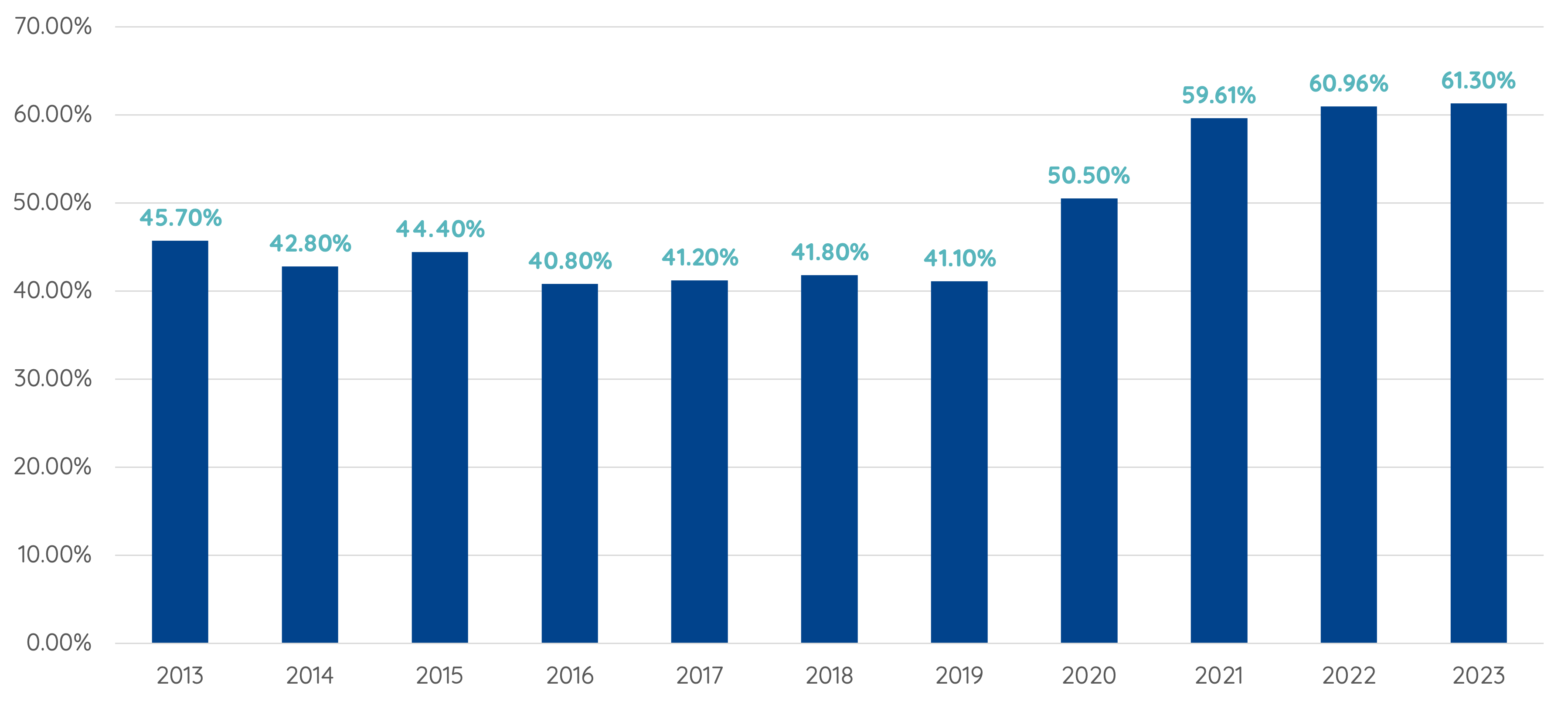During a recent Cabinet meeting, a comprehensive report on Thailand’s management of public debt was presented by Mr. Anucha Burapachaisri, the government spokesperson. The report, which incorporates key statistics and figures as of March 31, 2023, sheds light on Thailand’s public debt-to-GDP ratio and its stable outlook. Notably, it underscores the resilience of Thailand’s public finance sector and accentuates the country’s robust fiscal position.
According to the report, Thailand’s actual public debt-to-GDP ratio stands at 61.30%, well below the State Finance and Financial Discipline Committee’s framework limit of 70%. The following figures depict the public debt and GDP:
1. Public Debt-to-GDP Ratio:
1.1 Public debt: THB 10,797,505.46 billion
1.2 GDP: THB 17,615,169.00 billion
2. Government Debt Burden-to-Revenue Ratio:
2.1 Government debt burden: THB 805,677.79 billion
2.2 Estimated annual revenue: THB 2,606,589.21 billion
3. Foreign Currency Public Debt-to-Total Public Debt Ratio:
3.1 Foreign currency public debt: THB 175,590.96 billion
3.2 Total public debt: THB 10,797,505.46 billion
4. Foreign Currency Public Debt-to-Export Revenue Ratio:
4.1 Foreign currency public debt: THB 5,943.86 billion
4.2 Export revenue: THB 11,882,174.88 billion

Figure. Thailand’s Debt to GDP Ratio (2013 – 2023).
Public Debt Management and Risk Mitigation
The report commends the Thai government’s efficient management of public debt, which ensures optimal costs and acceptable risk levels. With 98% of the debt denominated in the local currency (Thai Baht), exchange rate risks are minimized. The government has also adopted proactive measures such as pre-funding when interest rates are favorable, as well as debt restructuring strategies like extension and risk mitigation. Despite the impact of the COVID-19 pandemic, which led to an additional borrowing of THB 1.5 trillion to support the population and expedite economic recovery, Thailand’s public debt-to-GDP ratio remained at 61.30%.
Under normal circumstances, the Thai government borrows funds to address budget deficits and channel them towards vital infrastructure projects, spanning transportation, energy, public utilities, education, and housing. Before the pandemic, 75% of loans were allocated to such projects, while the public debt-to-GDP ratio stood at 41.06%. However, with a shift in priorities due to the COVID-19 outbreak, the government focused on providing immediate relief to the people and stimulating economic and social recovery, aligning with global government strategies. Consequently, the public debt-to-GDP ratio increased to 61.30% as of March 2023.
Commentary
Thailand’s recent report on public debt highlights the nation’s commendable fiscal stability, exemplified by a favorable public debt-to-GDP ratio of 61.30%. This figure signifies the country’s prudent approach to managing its public debt, which has contributed to maintaining a strong fiscal position. By employing effective strategies in debt management and adopting a discerning borrowing strategy, Thailand has exhibited resilience within its public finance sector. These efforts have not only ensured the sustainability of the economy but have also bolstered investor confidence in the country’s financial outlook. Additionally, the Thai economy has received a “Stable Outlook” (BBB+) rating, further affirming the positive trajectory of the country’s economic stability.